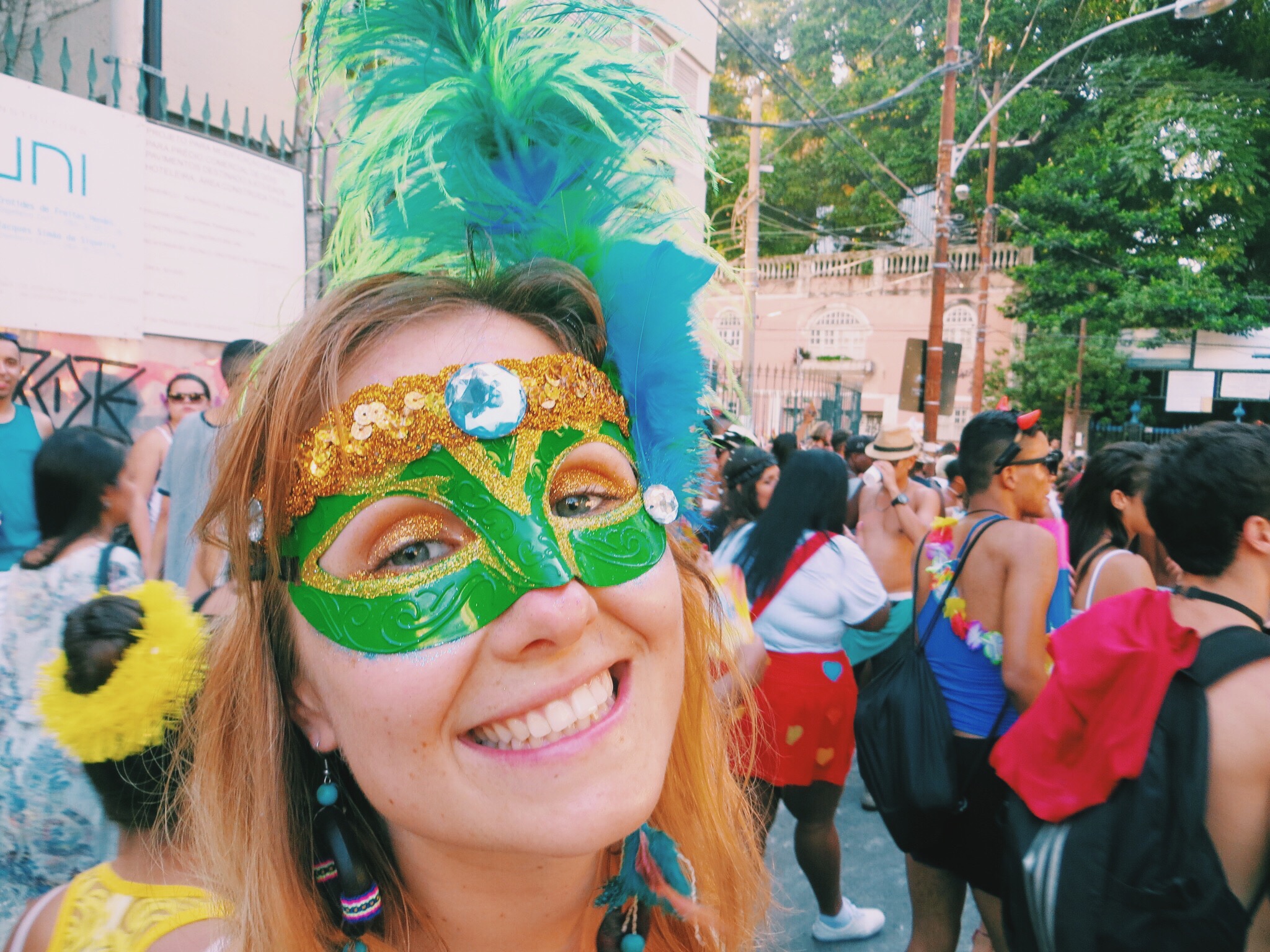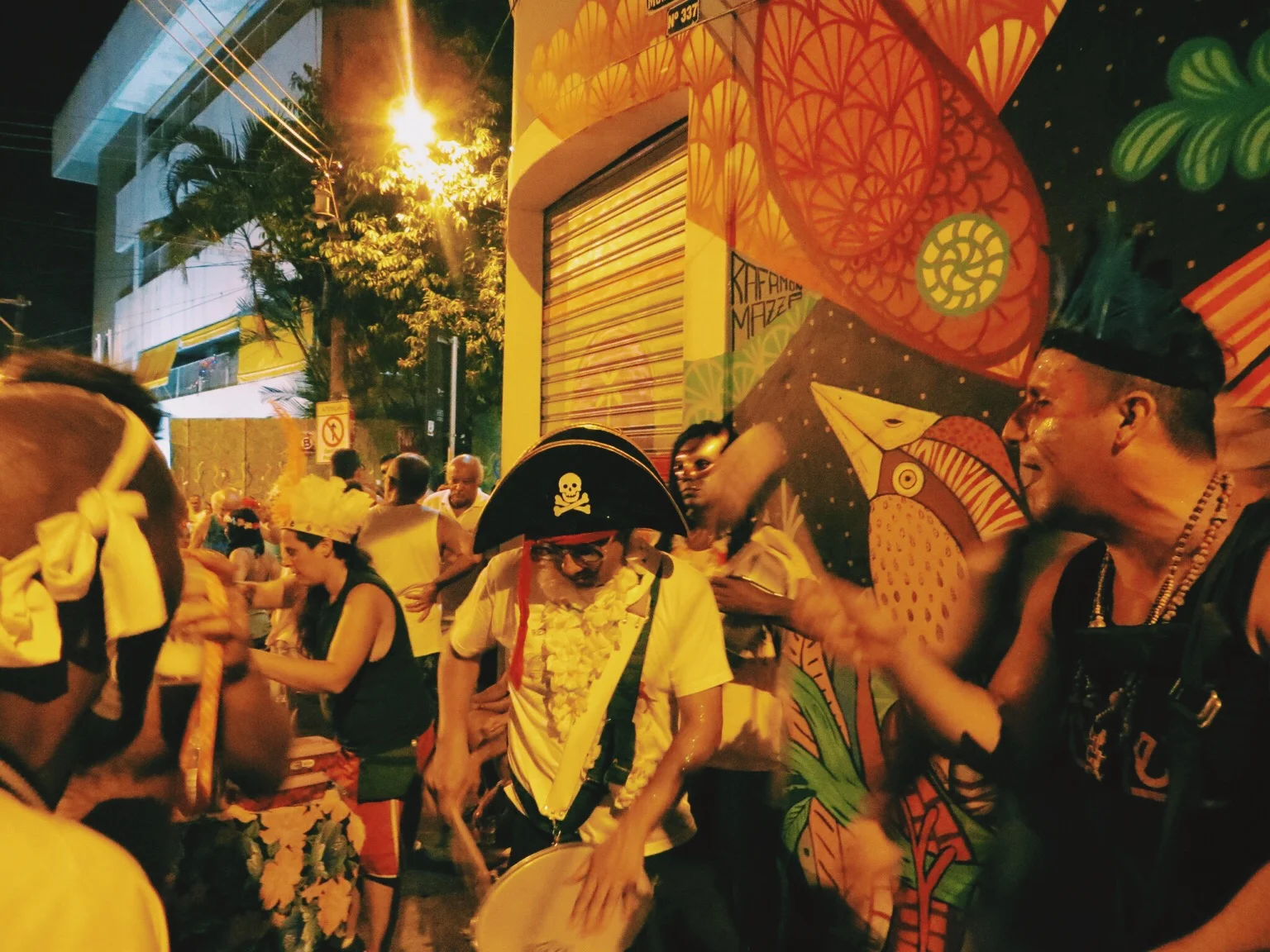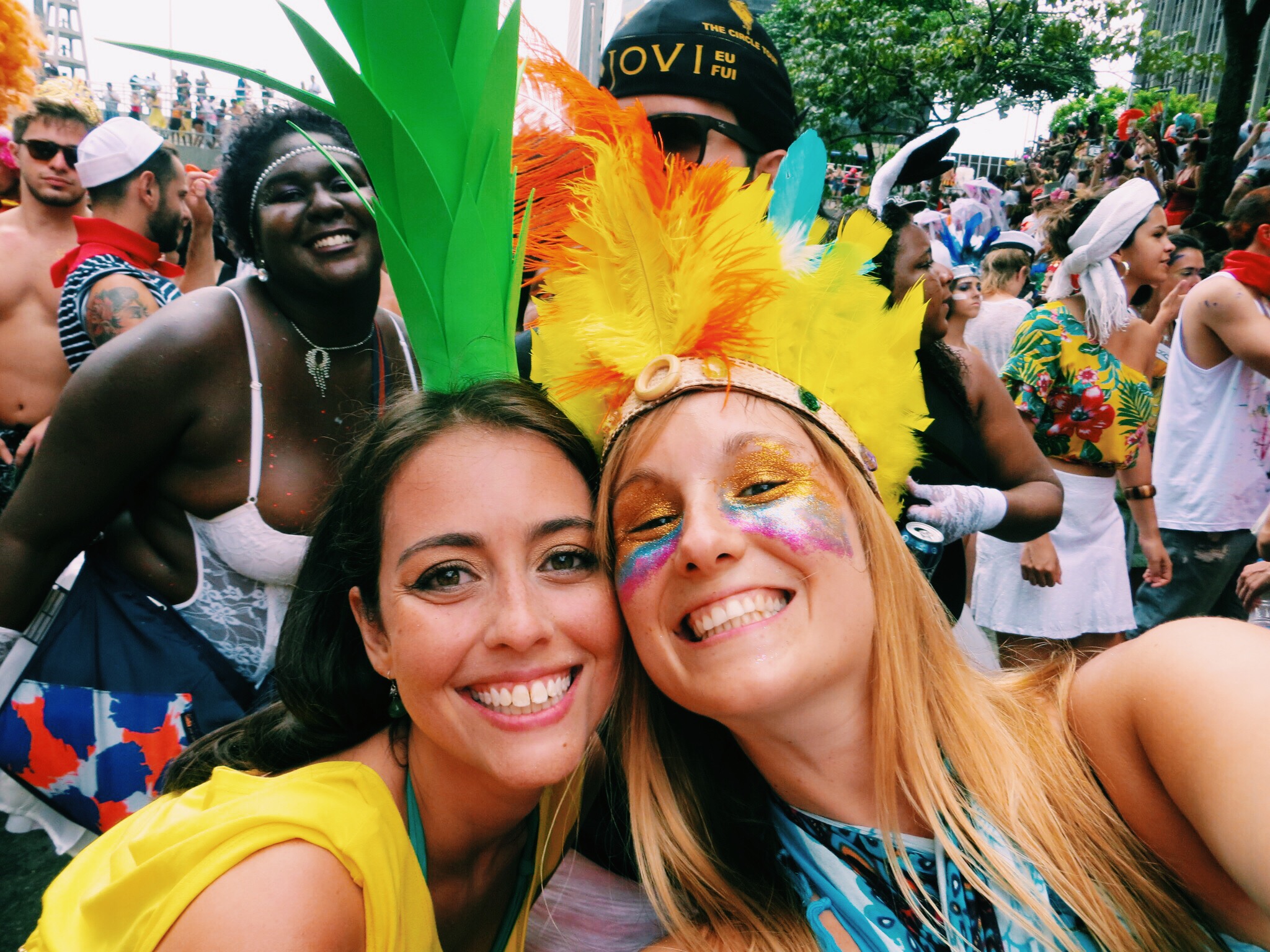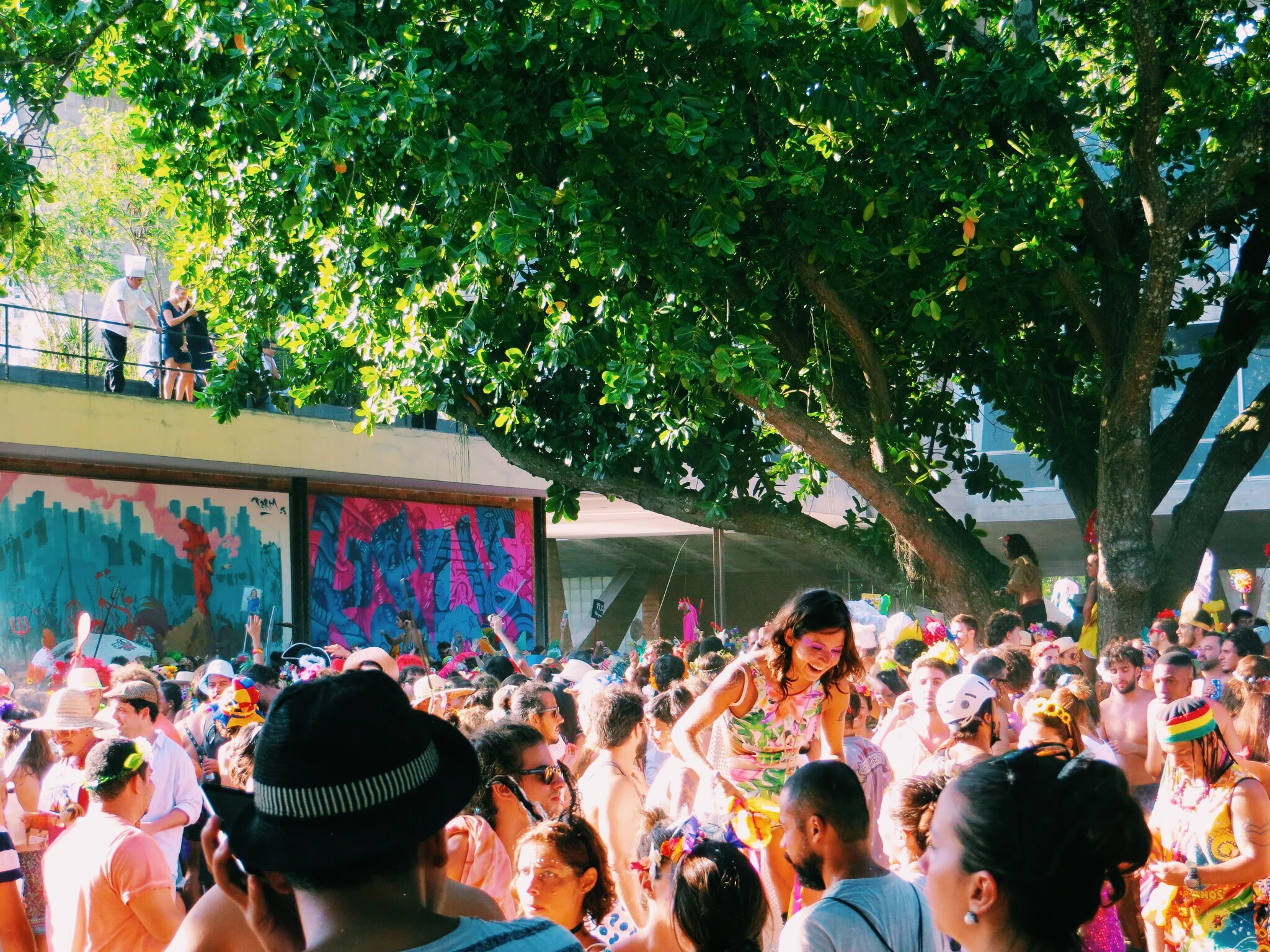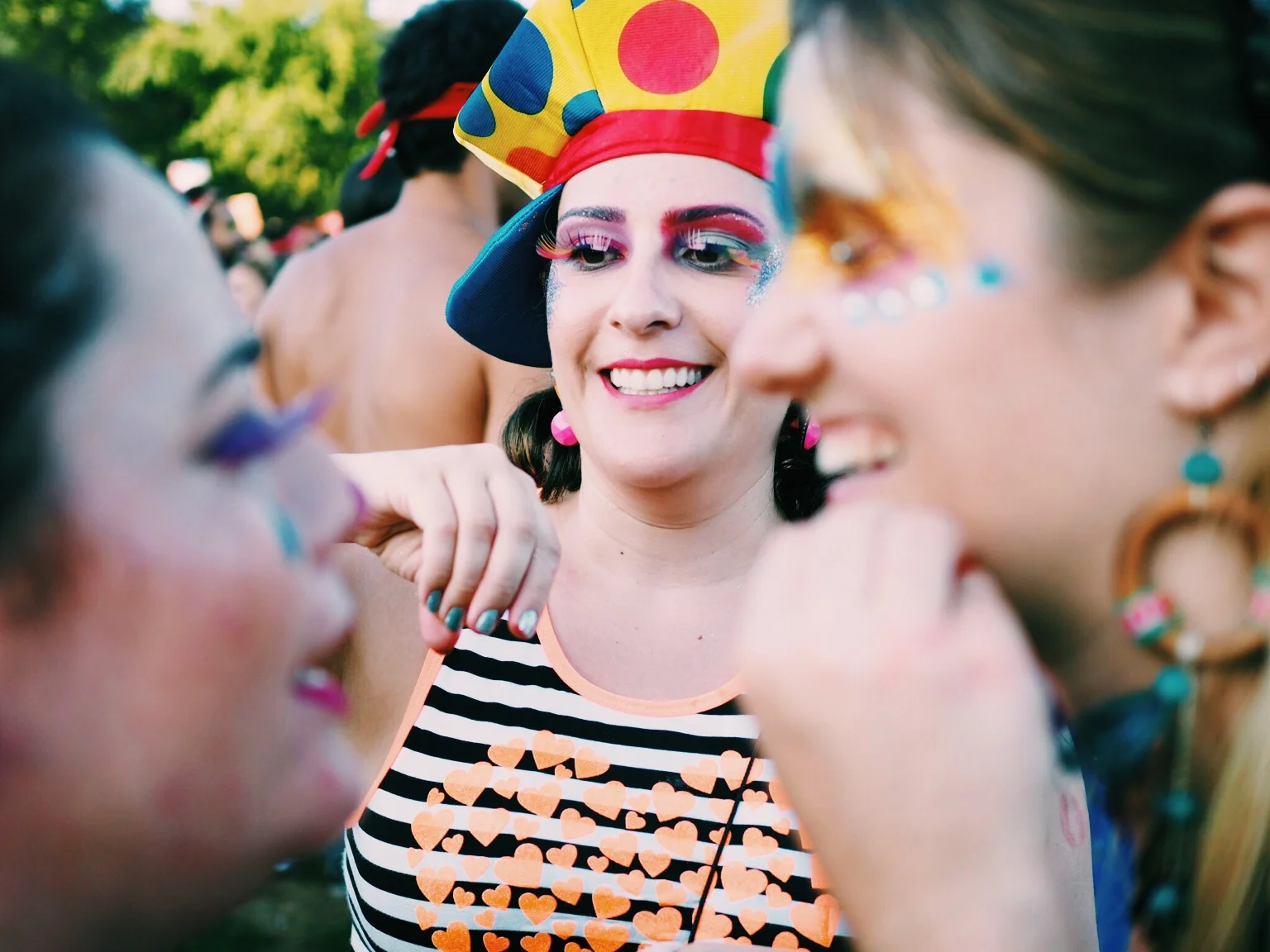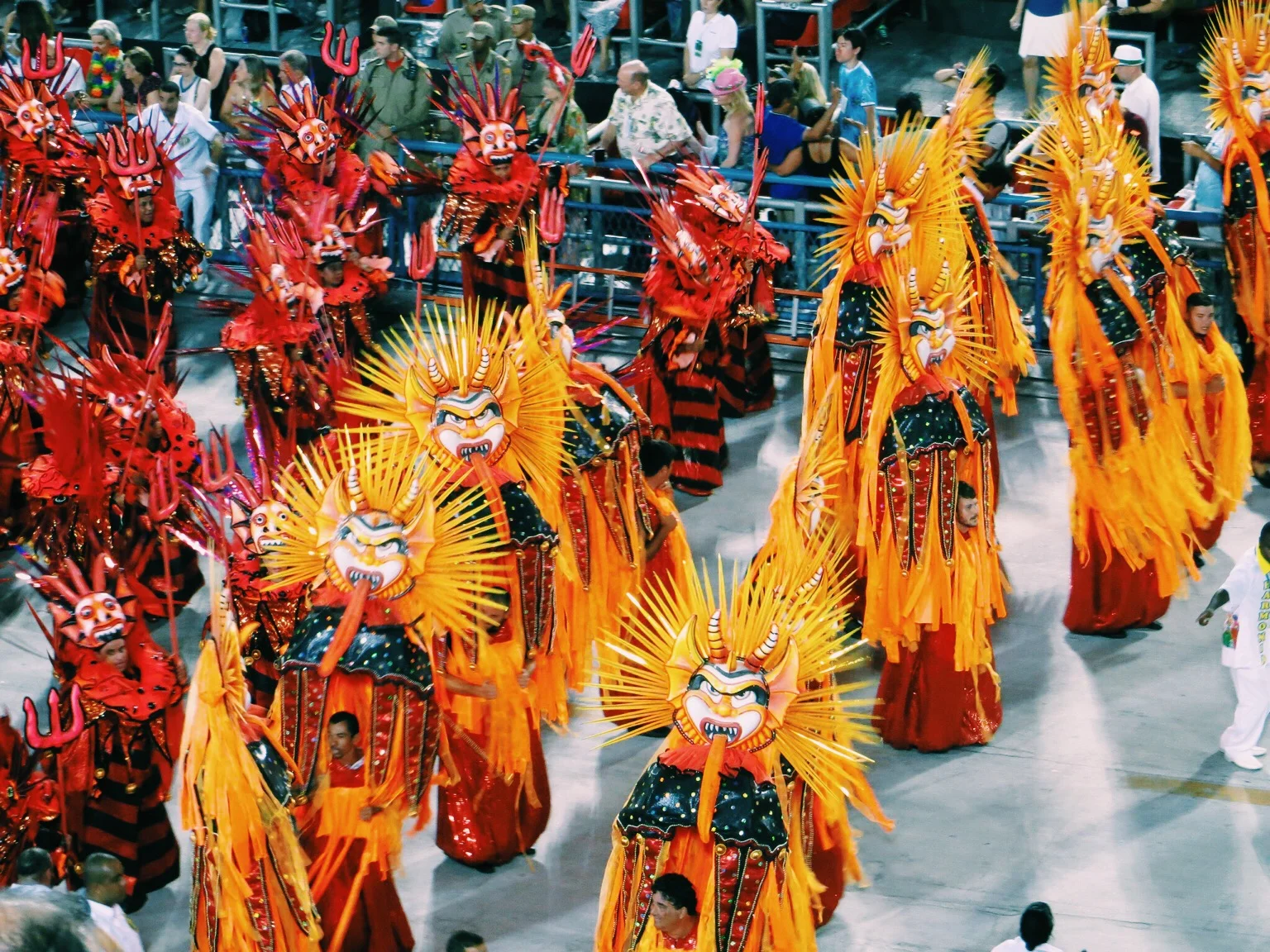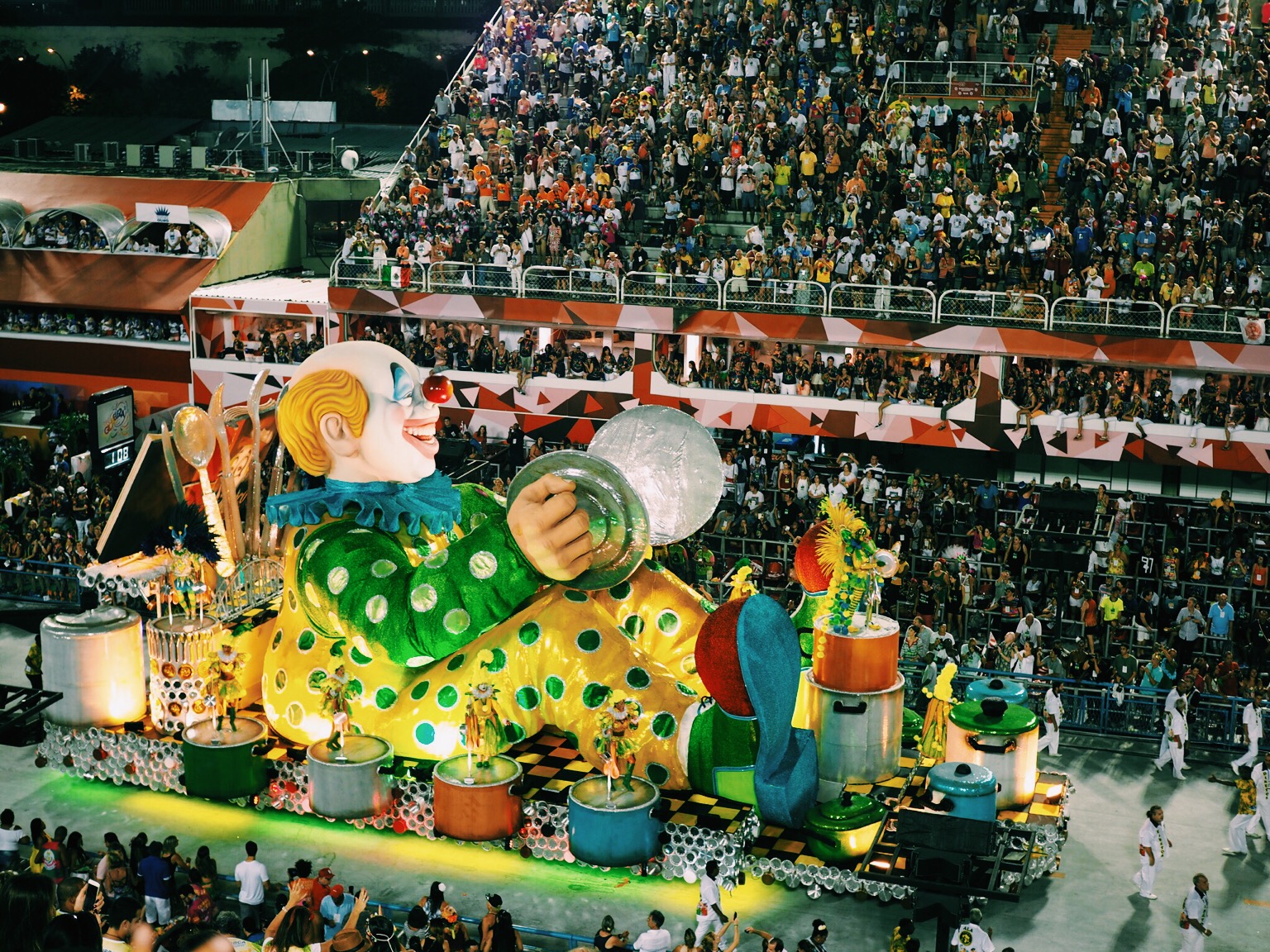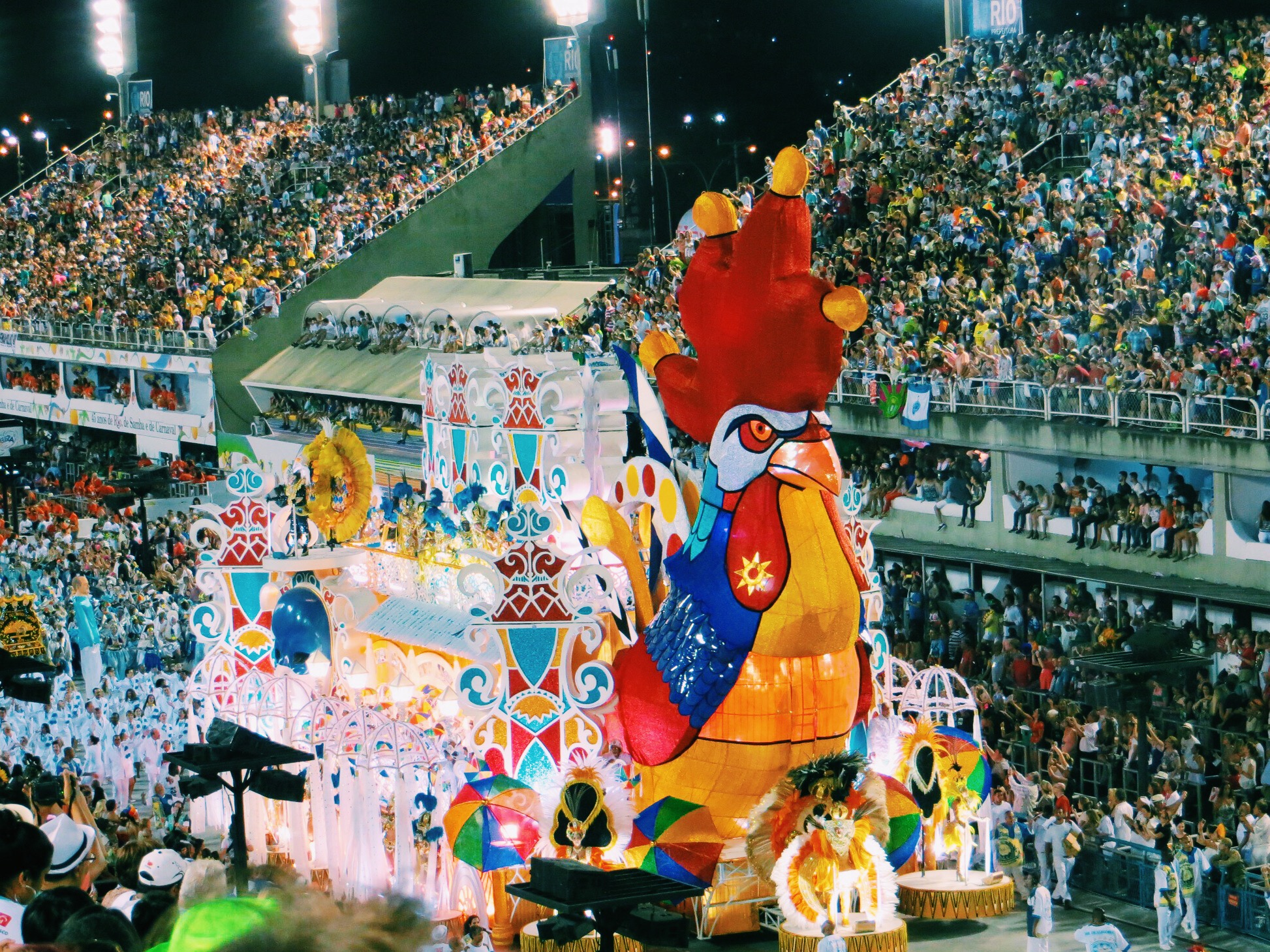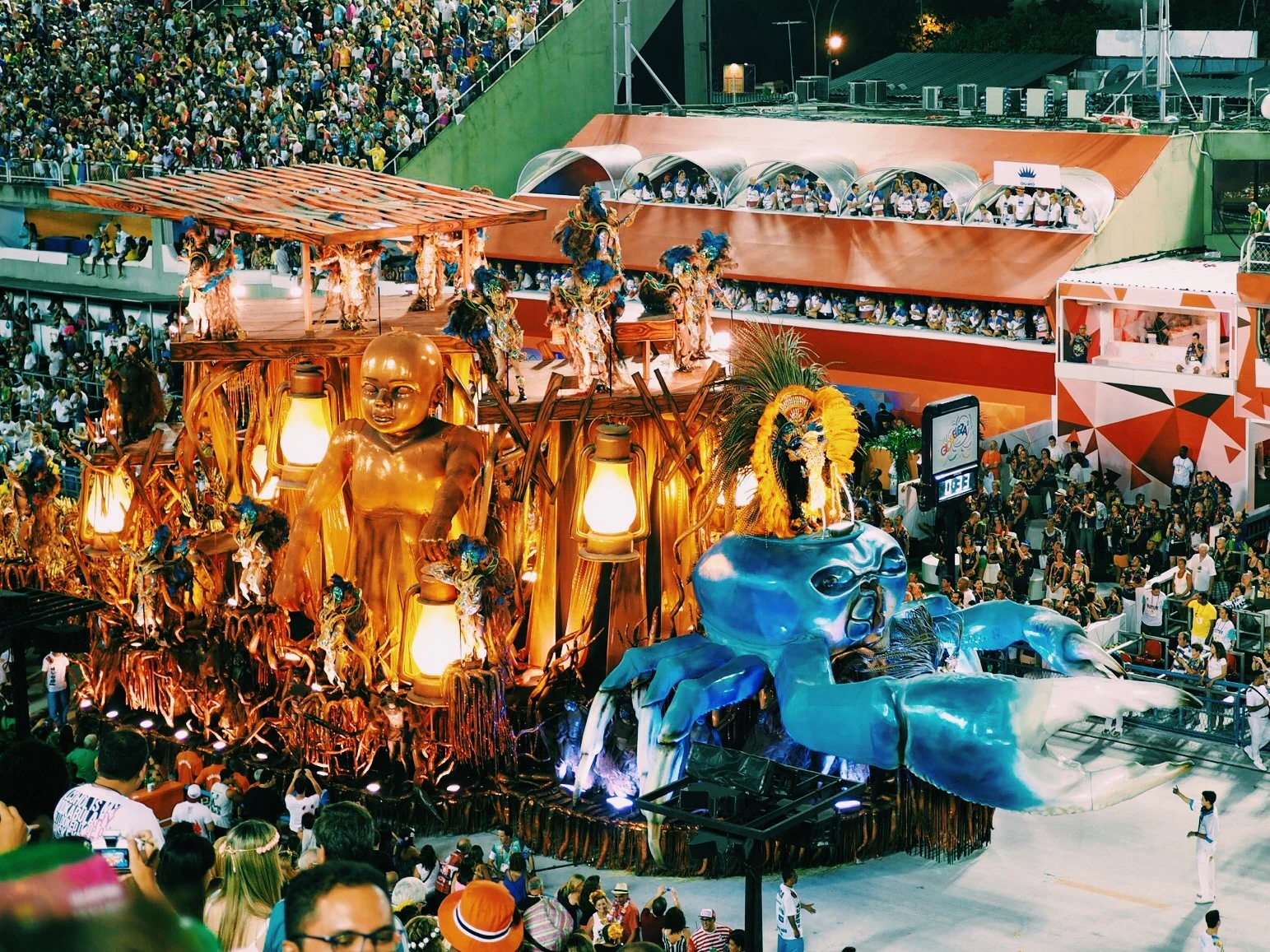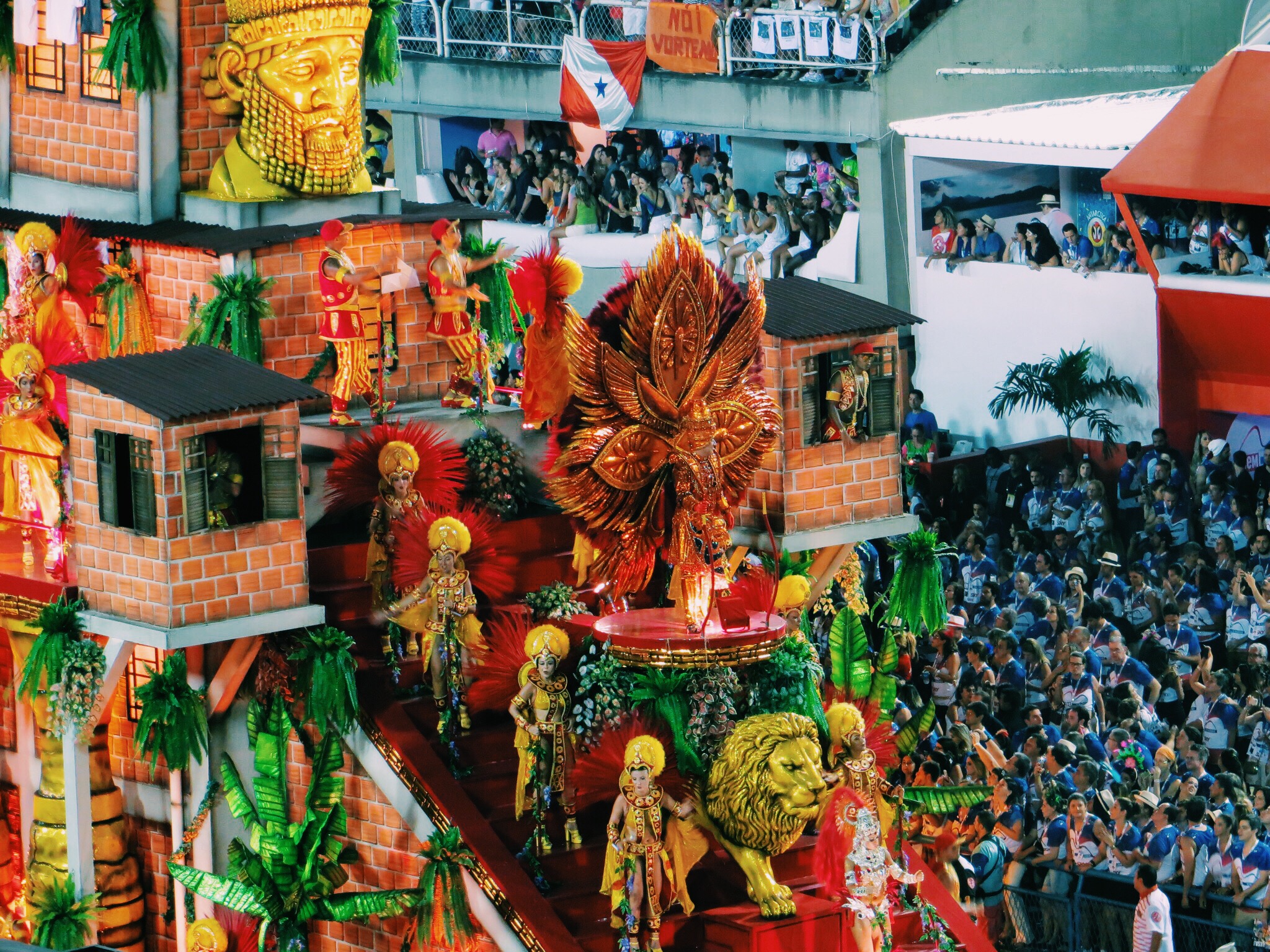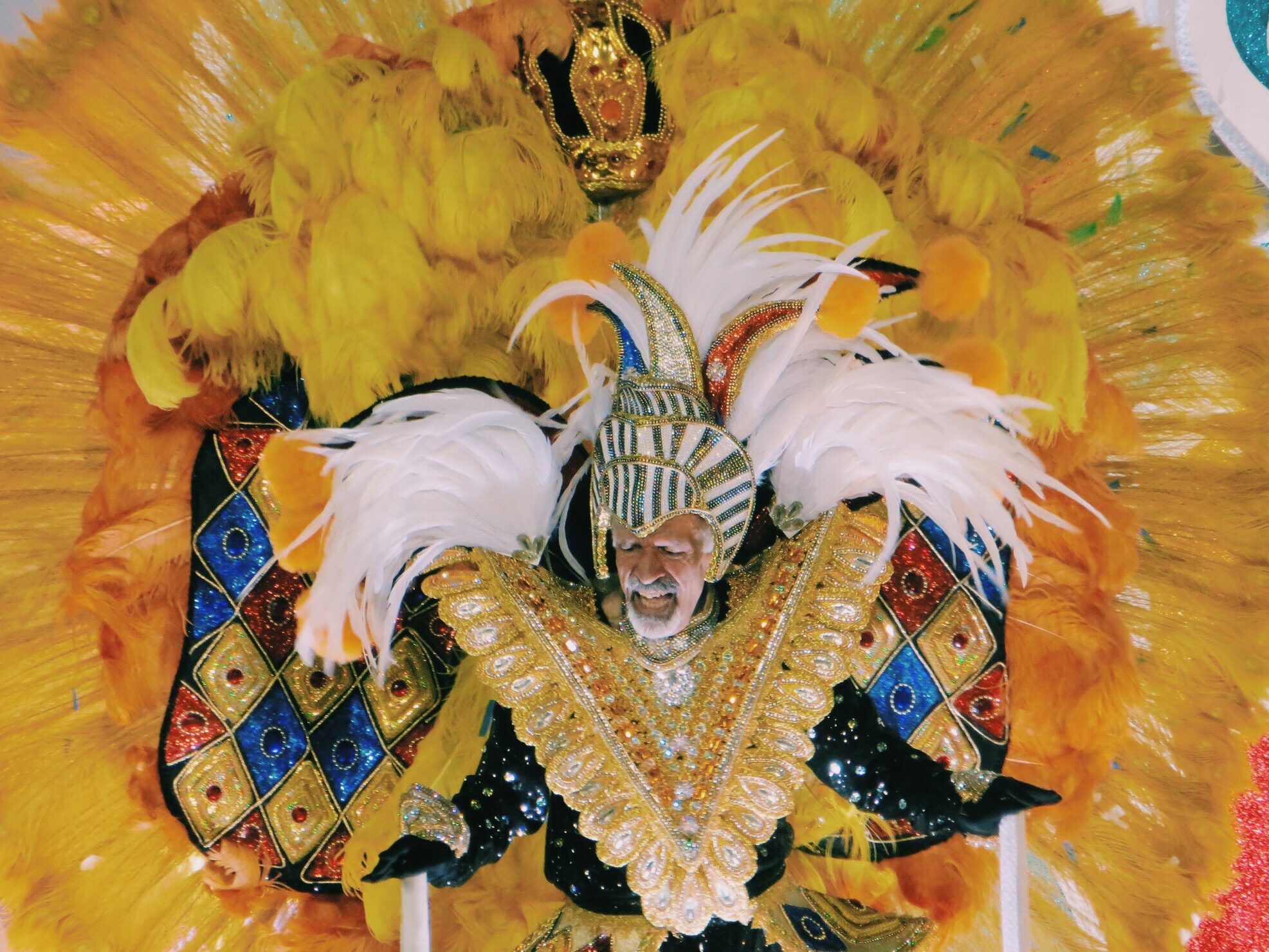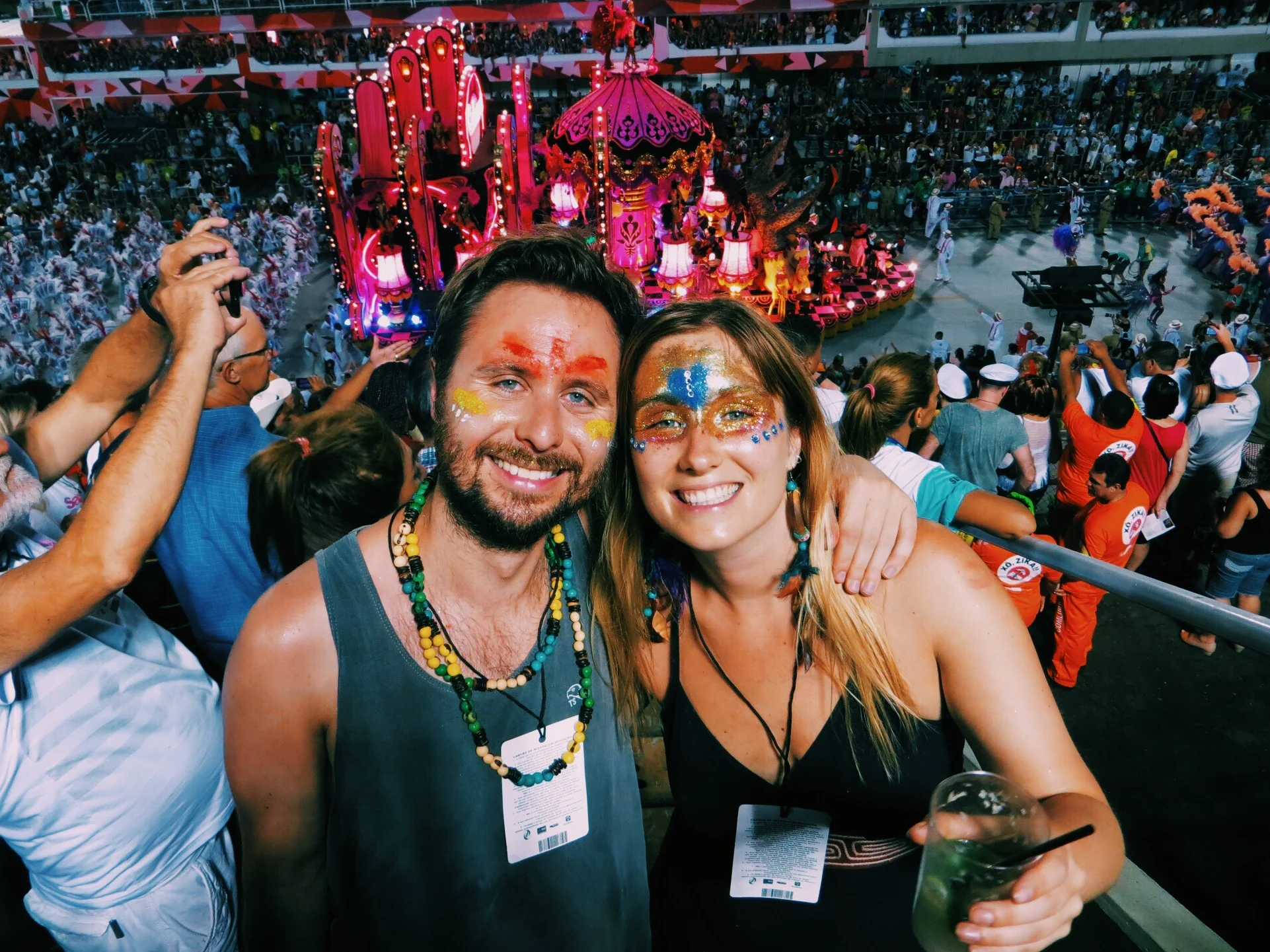Rio Carnival
After a hot, colorful and eye-opening two weeks in Rio we couldn't have asked for a more fitting end to our stay than Carnival. The 5-day festivities ranged from large and small blocos throughout the day, to the parade at the Sambadrome beating on to the early hours of the morning; it was a great way to experience Rio at it's most vibrant.
Carnival Blocos
One of our first experiences of Carnival was the traditional 'Carmelitas' bloco, held in the Santa Teresa neighbourhood. It was themed around an anecdote about a nun who apparently fled from a nearby church to party during Carnival. It wound through the cobbled streets led by large nun puppets, hanging streamers and spontaneous musicians all moving to one theme tune that didn't seem to get old for the entire procession. We fully enjoyed the bustling atmosphere of the Santa Teresa neighbourhood, and ended up in Bar Do Gomez (Armazém São Thiago) for a few street beers with the locals in the evening.
Our lovely friend Max introduced us to some resident Cariocas who knew Rio well, meaning we were able to experience Carnival (almost) like locals. Lia and Fernando and their friends showed us a great time, hoping from bloco to bloco and fuelling up on beer, Caipirinhas and amazing Brazilian food at Cafe Lamas.
The biggest and most lively bloco we went to was called 'Boi Tolo' (which translates to Foolish Ox), with pounding drums, bright costumes and an incredible atmosphere as the crowds danced through the streets of Gloria and central Rio. It peaked in volume when we travelled under the bridges, with traditional Carnival chants sung loudly by the crowds:
The Sambadrome
The Sambradrome during Rio Carnival was something we'd always wanted to experience. Having booked tickets for Mondays parade we arrived early to get some decent seats in Sector 8 before the 90,000 arena filled close to capacity. The parade itself was a visual feast for the eyes, with large fantastically-themed floats and loud beating music unique to each Samba school. The processions of dancers were equally impressive, with bold yet intricate costumes that helped tell the story of each schools parade through Samba dancing.
The main observation from our two weeks in Rio was how inclusive Carnival was. Divides in wealth, gender, race and age seemed to totally diminish, bringing everyone in the city closer together; whether in small local blocos or full-blown lavish parades. We really felt that Carnival was the perfect way to end our trip in Rio, and begin our trip around South America.

